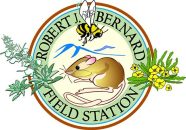Farooq, Ana (2016)
Effects of light and noise pollution on bird vocalizations.
Bachelor of Arts, Claremont McKenna College, Biology.
Advisor: Elise Ferree.
Artificial nighttime lighting and noise pollution have far reaching effects on the biology of a myriad of urban dwelling organisms. Avian species that depend on light for physiological and daily activity cues, and specific acoustic conditions for communication, are particularly susceptible to the effects of these two burgeoning pollutants. Past research has shown that light and noise can influence the timing of the dawn and dusk chorus of birds, and that ambient noise can influence the frequency (Hz) of singing. This study explored impacts of light and noise pollution on the vocalizations of two resident species of Claremont, CA, Northern Mockingbirds and California towhees. The daily singing onset and offset and mean minimum singing frequency (Hz) of the two species was compared among sites with varying light and noise levels, in the fall and spring separately. California towhees began singing significantly earlier at sites with higher light exposure, in the spring, which coincides with their breeding season. Mockingbird dawn chorus timing did not differ significantly among sites in the fall or spring, but the trends indicate earlier singing at louder and more light polluted sites, in the spring season. No significant shifts were observed in the cessation of the dusk chorus of either species across different light and noise conditions. In addition there is some evidence that California towhees sang at an increased frequency (Hz) in response to higher noise levels, in the fall. Our results highlight the need for more experimental research in this area, especially with respect to the differential impacts of light and noise on vocalizations of different species, and how these impacts may ultimately influence overall fitness of urban dwelling bird populations.
